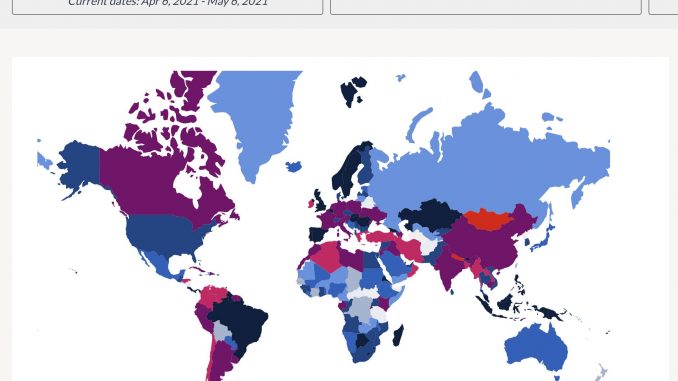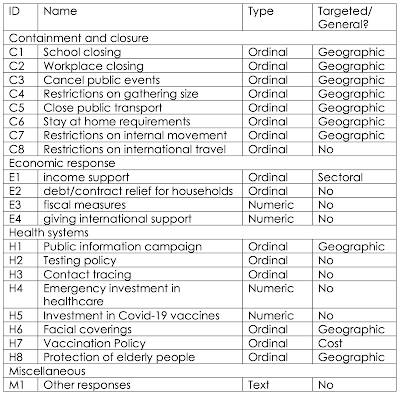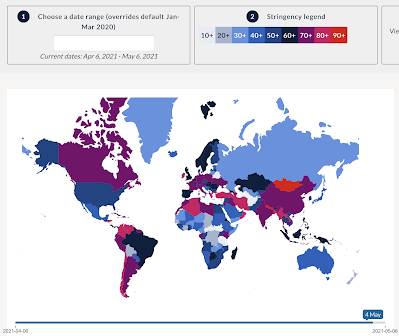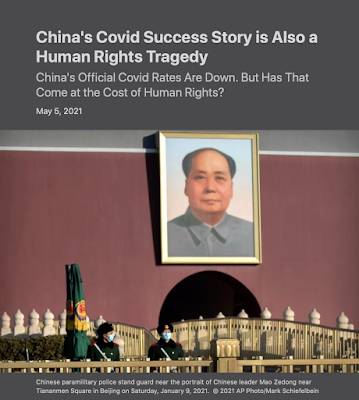
With Western, English-speaking nations clamping down with ever-increasing measures during the pandemic, an analysis by researchers at Oxford University is particularly pertinent.
In the "Variation in government responses to COVID-19", a group of researchers at Oxford's Blavatnik School of Government assesses the wide range of governmental responses to the COVID-19 pandemic, introducing the Oxford COVID-19 Government Response Tracker or OxCGRT. OxCGRT provides "a systematic way to track government responses to COVID-19 across countries and sub-national jurisdictions over time.". This data is then combined into indices that aggregate these responses and explores whether the intensity of the government responses affects the rate of infection.
As we have become aware over the past year, government measures to combat the spread of the SARS-CoV-2 virus have included travel bans and restrictions, school closures, bans on public and private gatherings, contact tracing, mandatory masking, social distancing and self-quarantining among others. The OxCGRT indicators include the following three types:
1.) Ordinal: These indicators measure policies on a simple scale of severity / intensity. These indicators are reported for each day a policy is in place. Many have a further flag to note if they are“targeted”,applying only to a sub-region of a jurisdiction, or a specific sector; or “general”, applying throughout that jurisdiction or across the economy
2.) Numeric: These indicators measure a specific number, typically the value in USD. These indicators are only reported on the day they are announced.
3.) Text: This is a “free response” indicator that records other information of interest.
Here is a table showing all indicators used in the research:
This data is used in three ways:
1.) to describe all government responses relevant to a given jurisdiction.
2.) to describe policies put in place by a given level and lower levels of government (i.e. state, provincial and city).
3.) to compare government responses across different levels of government.
The authors used data for more than 185 nations and created with a score of between 0 and 100 as follows:
1.) overall government response index
2.) stringency index
3.) containment and health index
4.) economic support index
Each index is then rescaled to create a score of between 0 and 100 and are then averaged to get the composite stringency index for each nation. It is important to understand that the indices do not measure the appropriateness or effectiveness of a government's response to the pandemic, rather they simply mellow for a cross-national comparison of government interventions.
Now, let's look at a map which shows the relationship between the number of COVID-19 cases and the stringency of government responses found on Oxford's COVID Tracker website for May 4, 2021:
Here are the scores for some nations in order from most stringent (highest scores) to least stringent (lowest scores):
Iran – 81.48
Cuba – 79.63
China – 78.24
France – 78.70
Canada – 75.46
Germany – 75.00
Brazil – 70.83
United Kingdom – 70.37
India – 69.91
Sweden – 65.74
United States – 56.94
Mexico – 47.22
South Africa – 47.22
Australia – 46.76
Japan – 42.59
Russia – 42.13
New Zealand – 22.22
As you can see, among OECD nations, France, Canada and Germany have stringency scores that are similar to that of China, Cuba and Iran, nations not particularly known for being free, and are far higher than that of Russia, another nation that is not considered "free" which has basically ended its lockdown and masking policies. It is interesting to note that, unlike its high scoring so-called "free" peers, China's response to the pandemic was criticized by Human Rights Watch as shown here:
Apparently, the governments of nations that are English-speaking and part of the world's advanced economies aren't subjected to the same degree of scrutiny as China when it comes to their heavy-handed and stringent responses to the pandemic.
You can publish this article on your website as long as you provide a link back to this page.




Be the first to comment